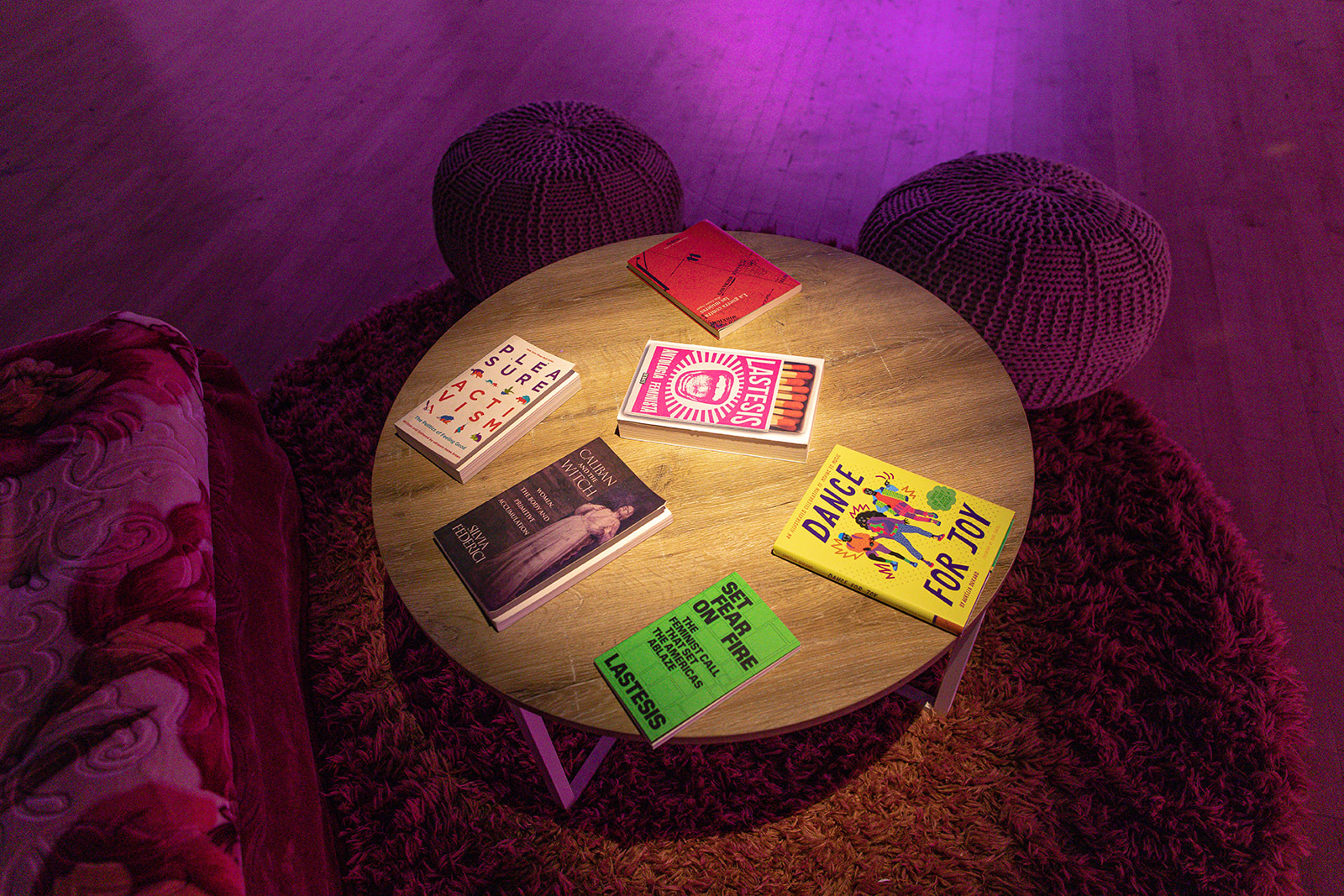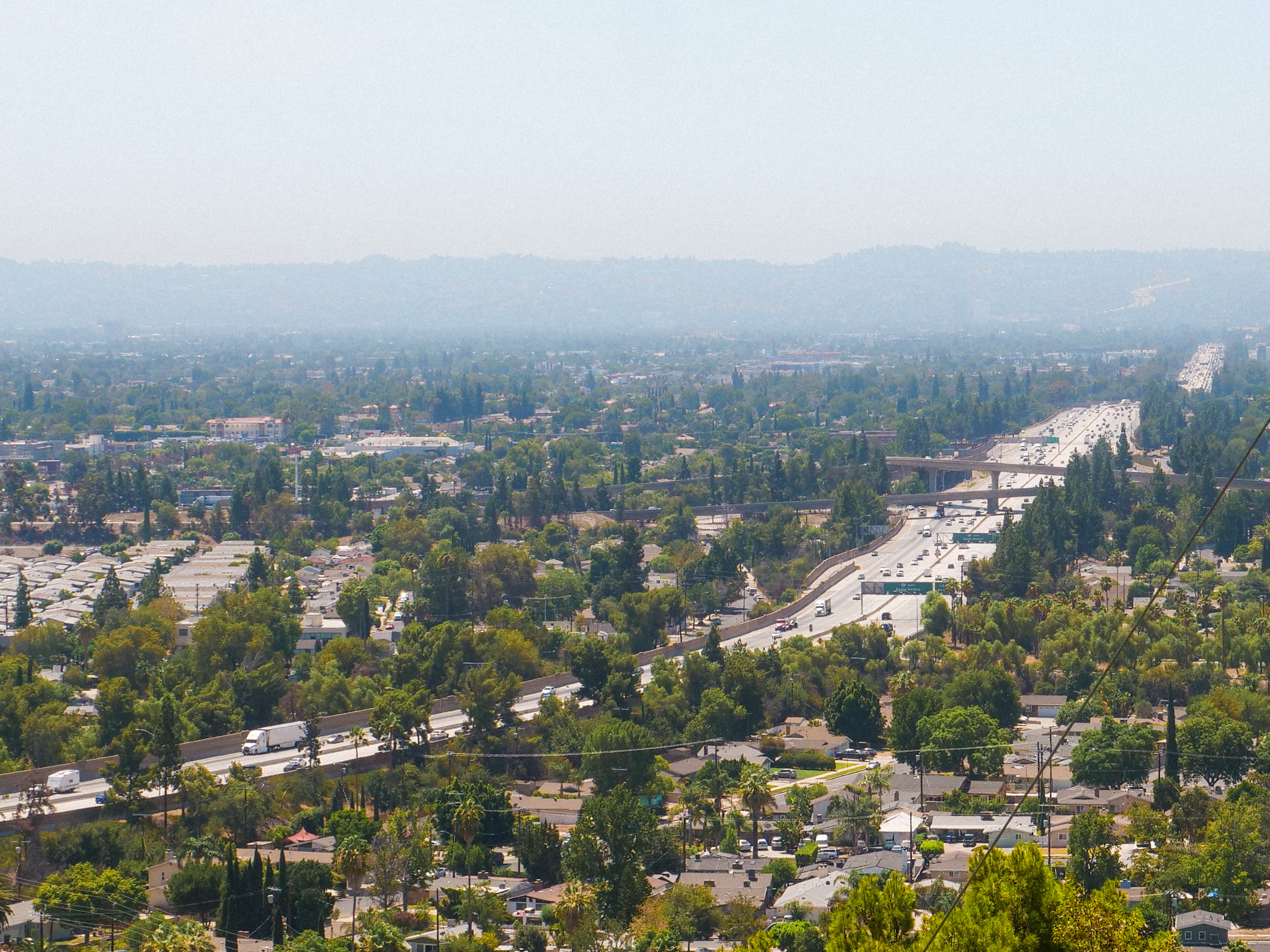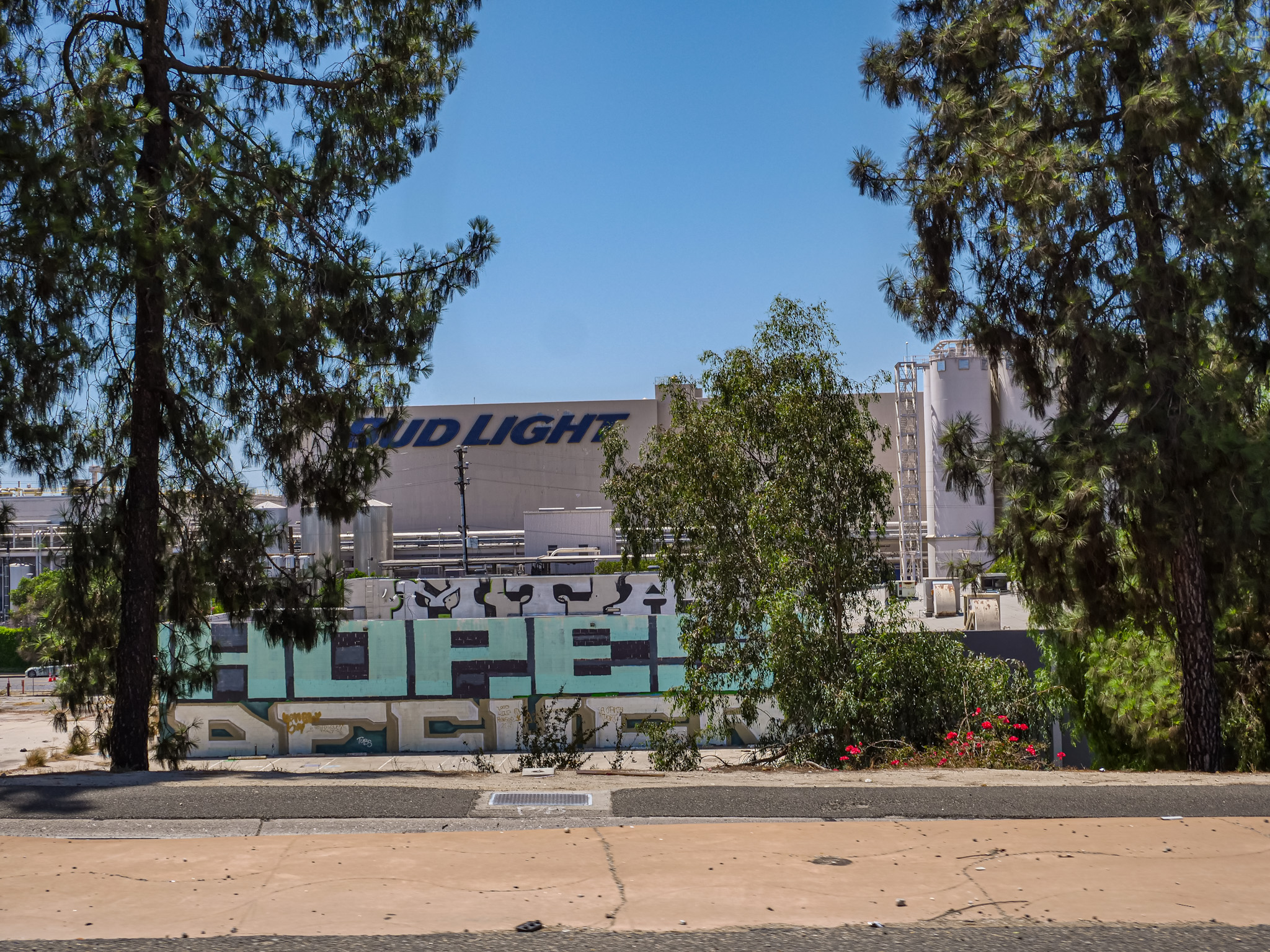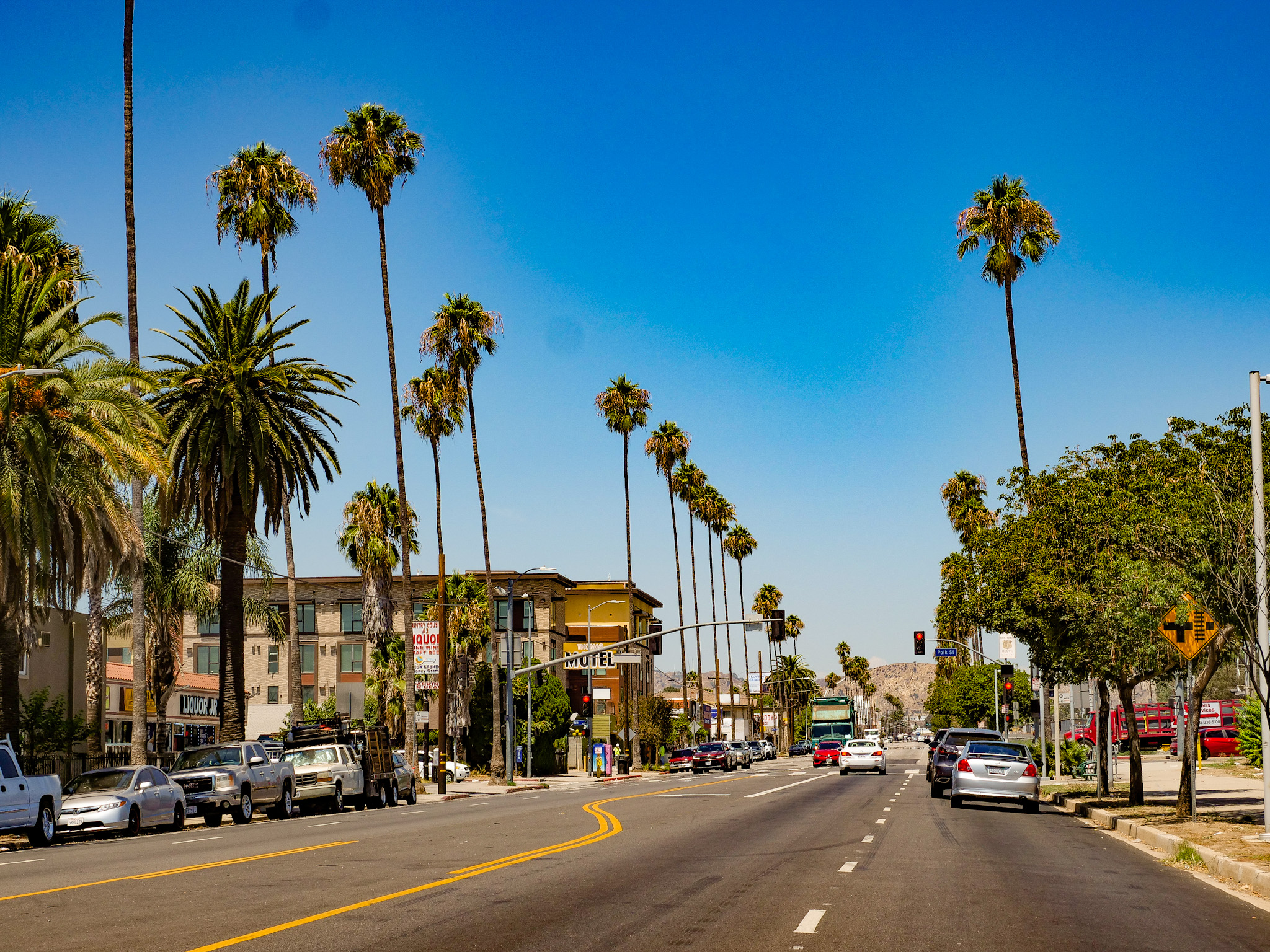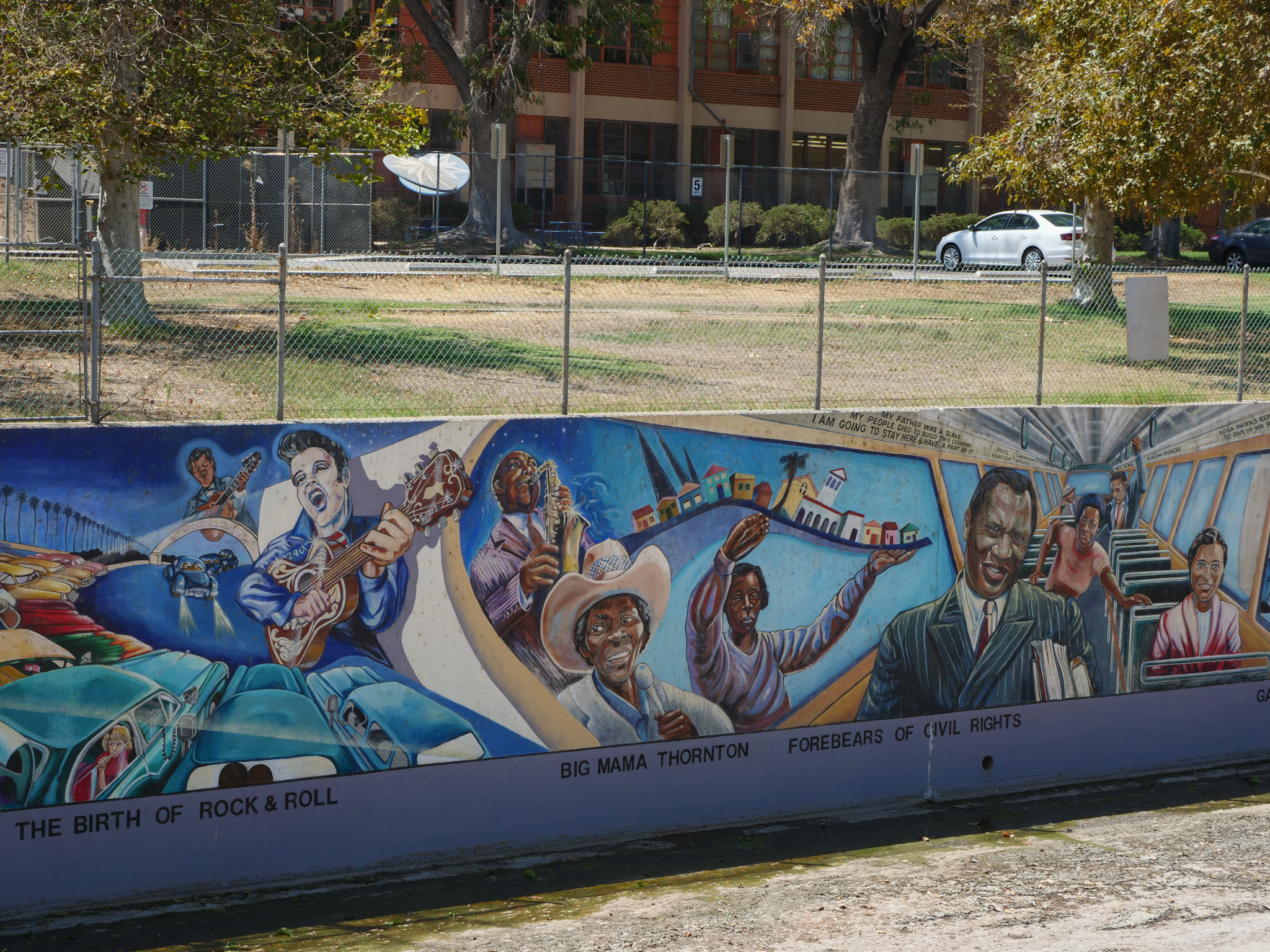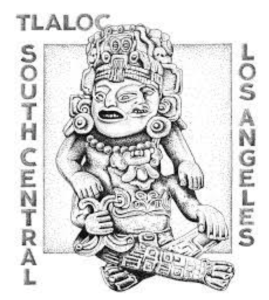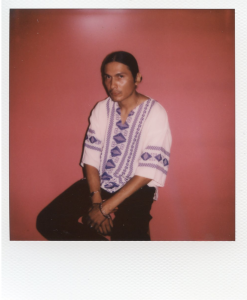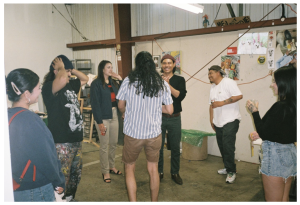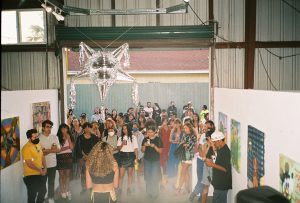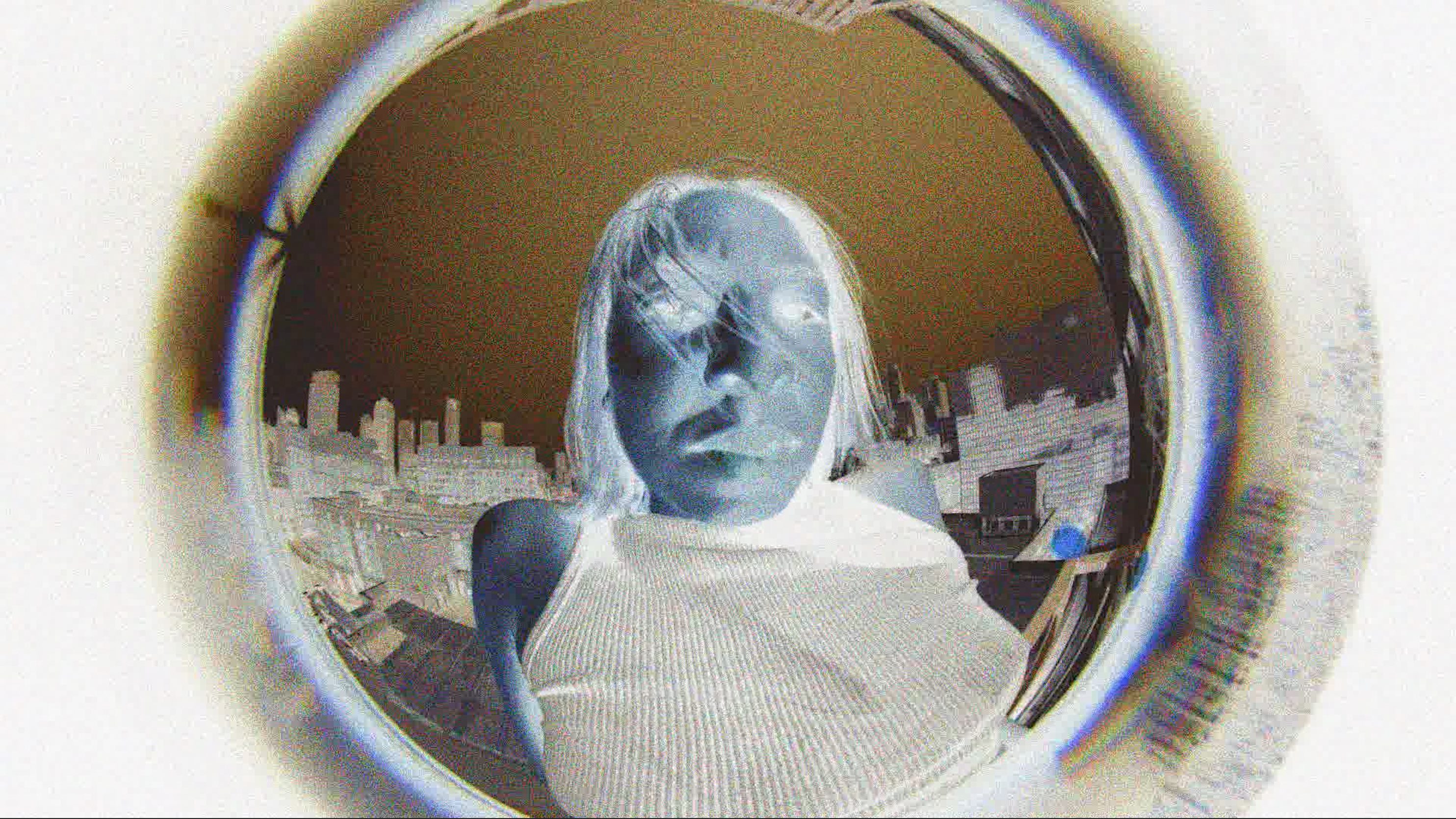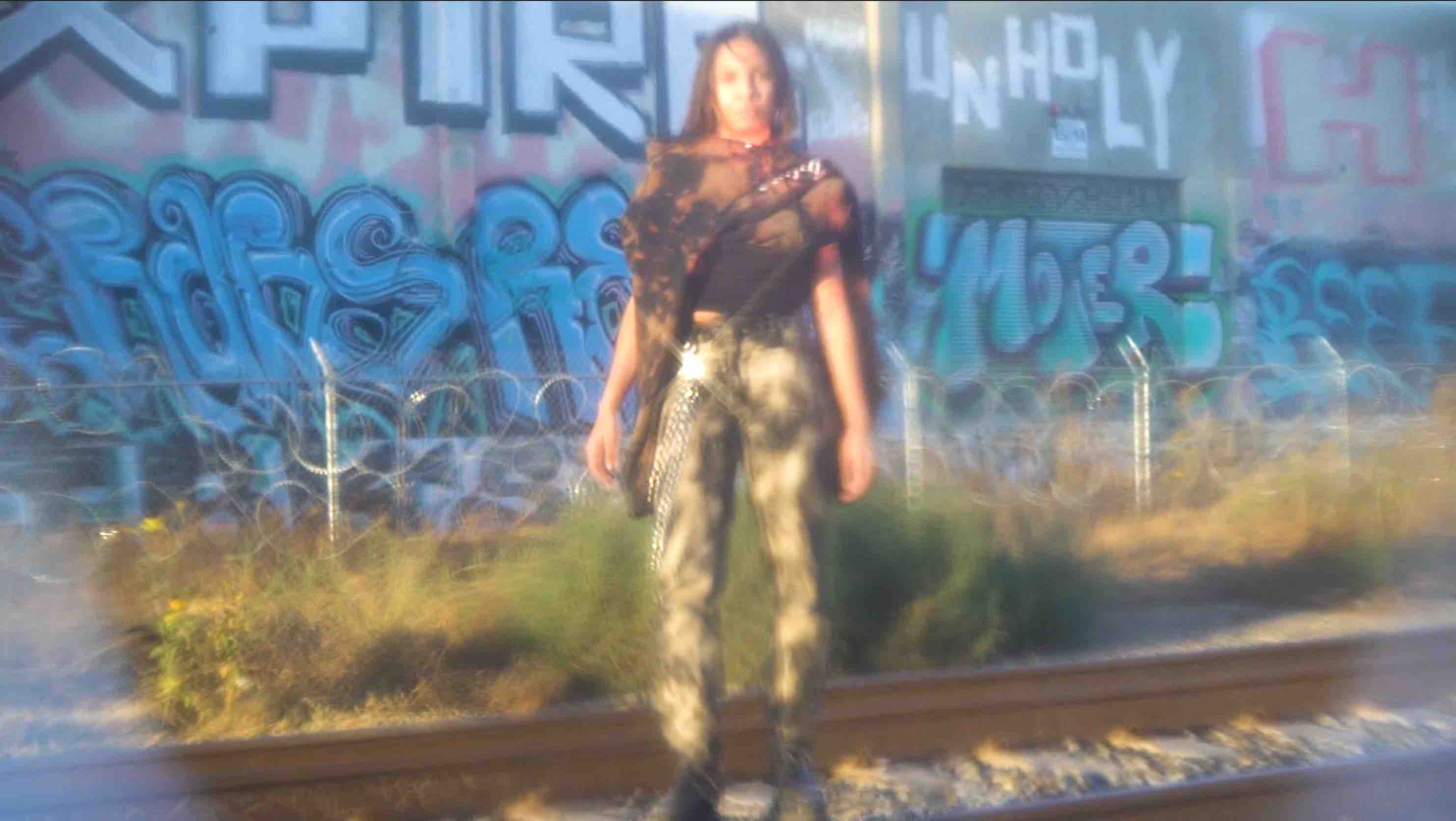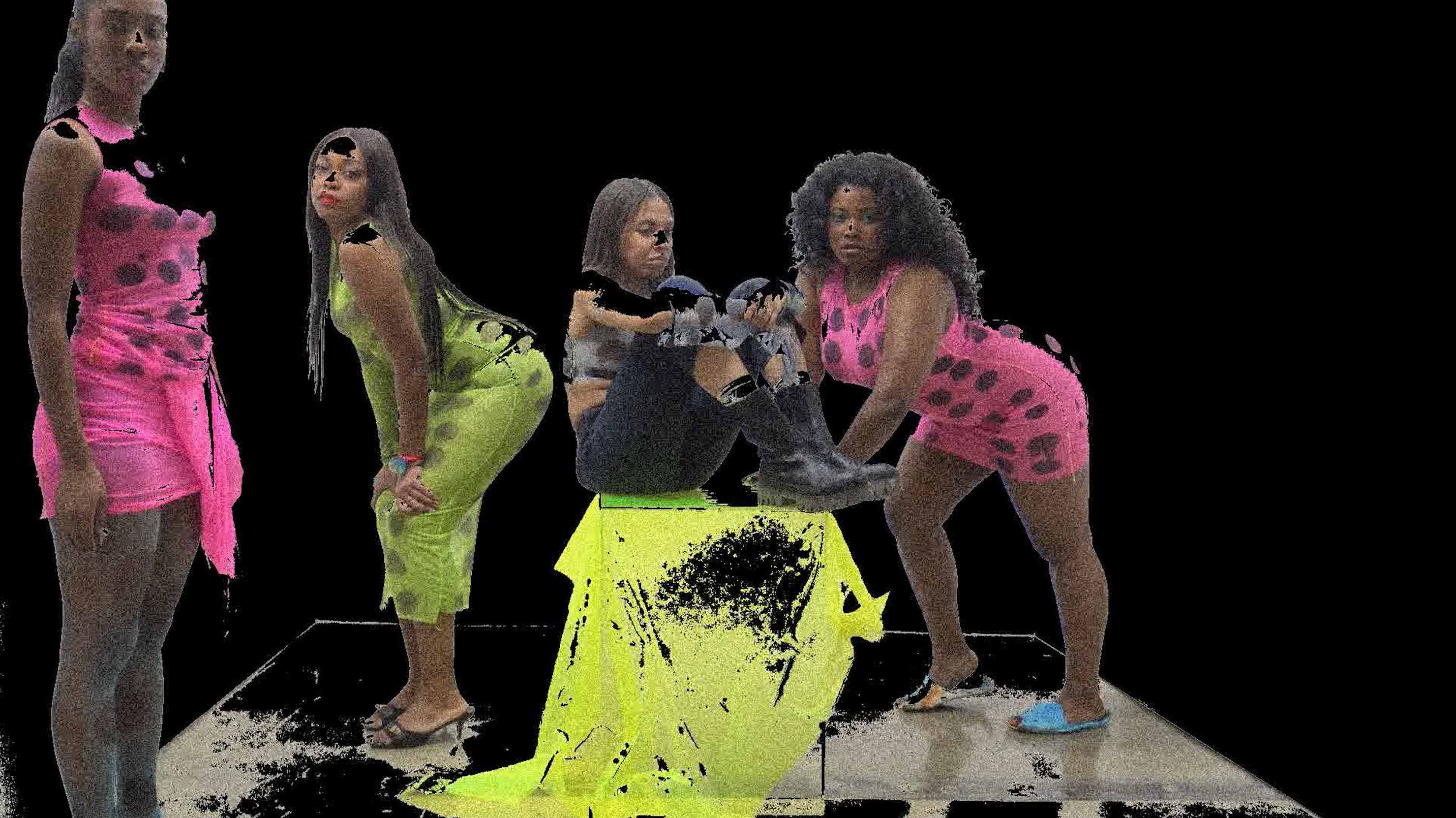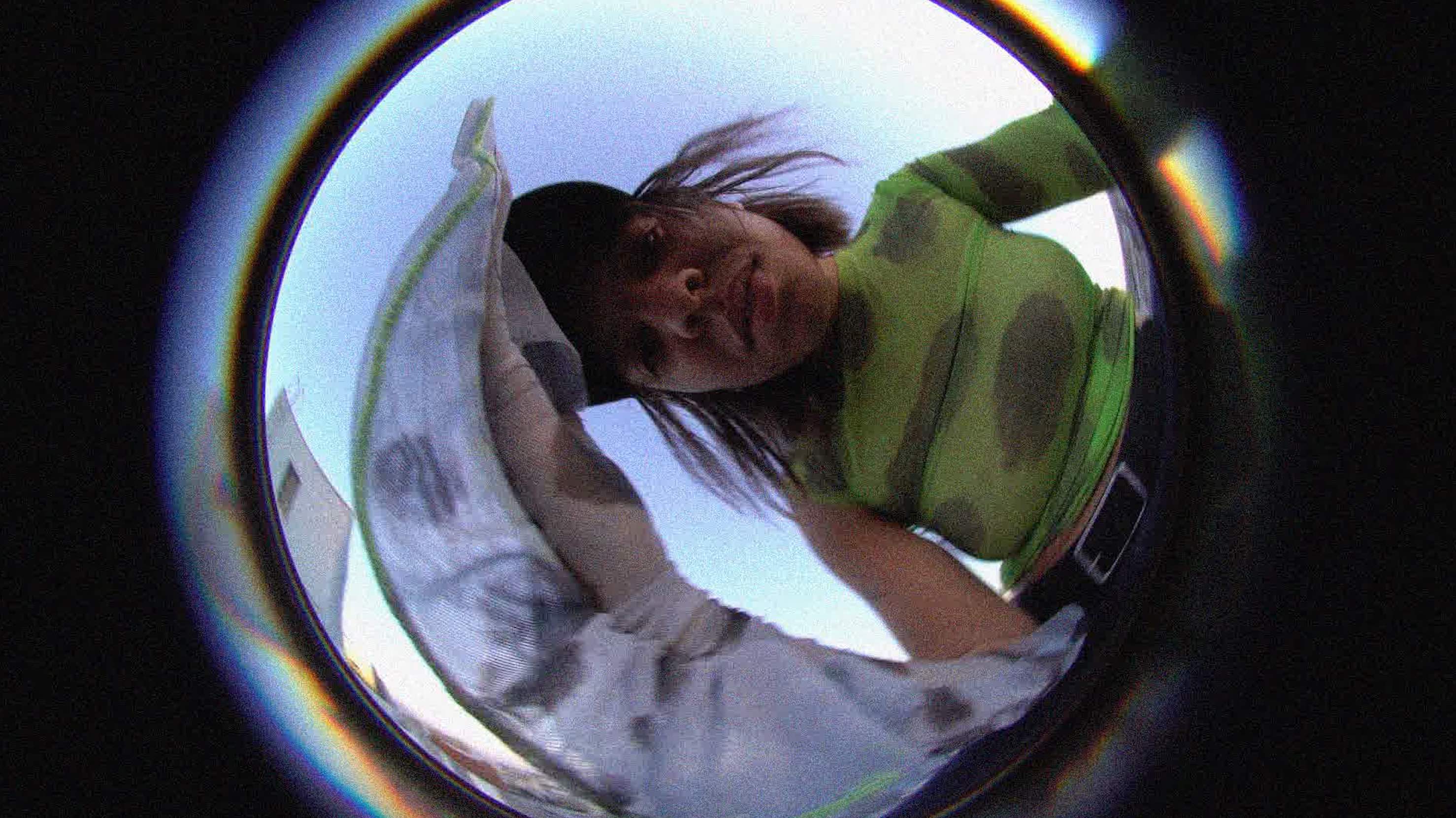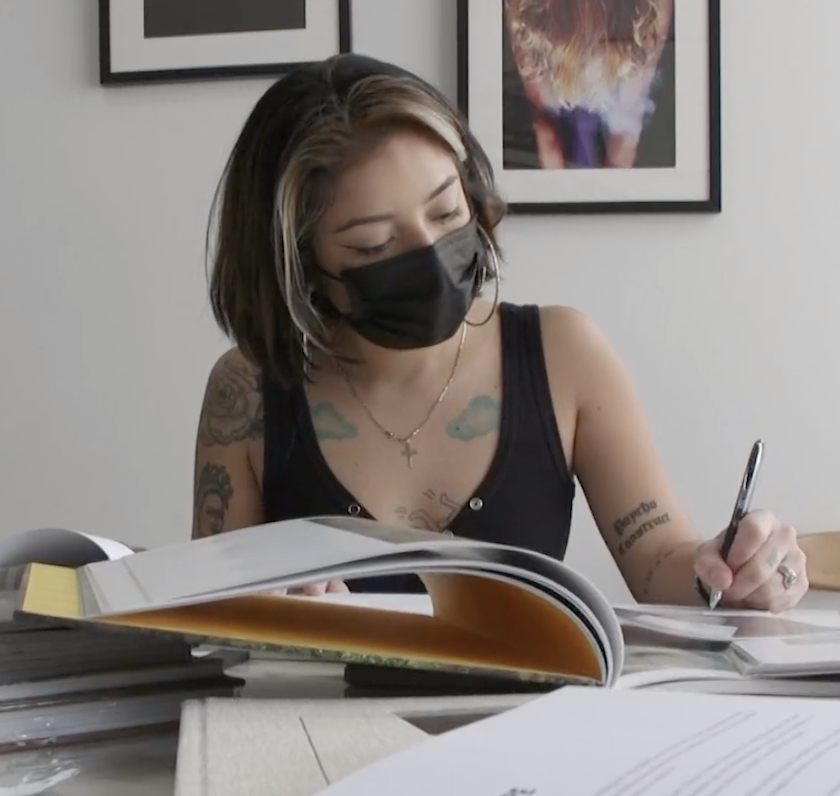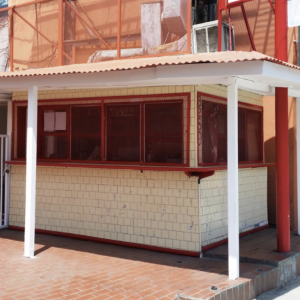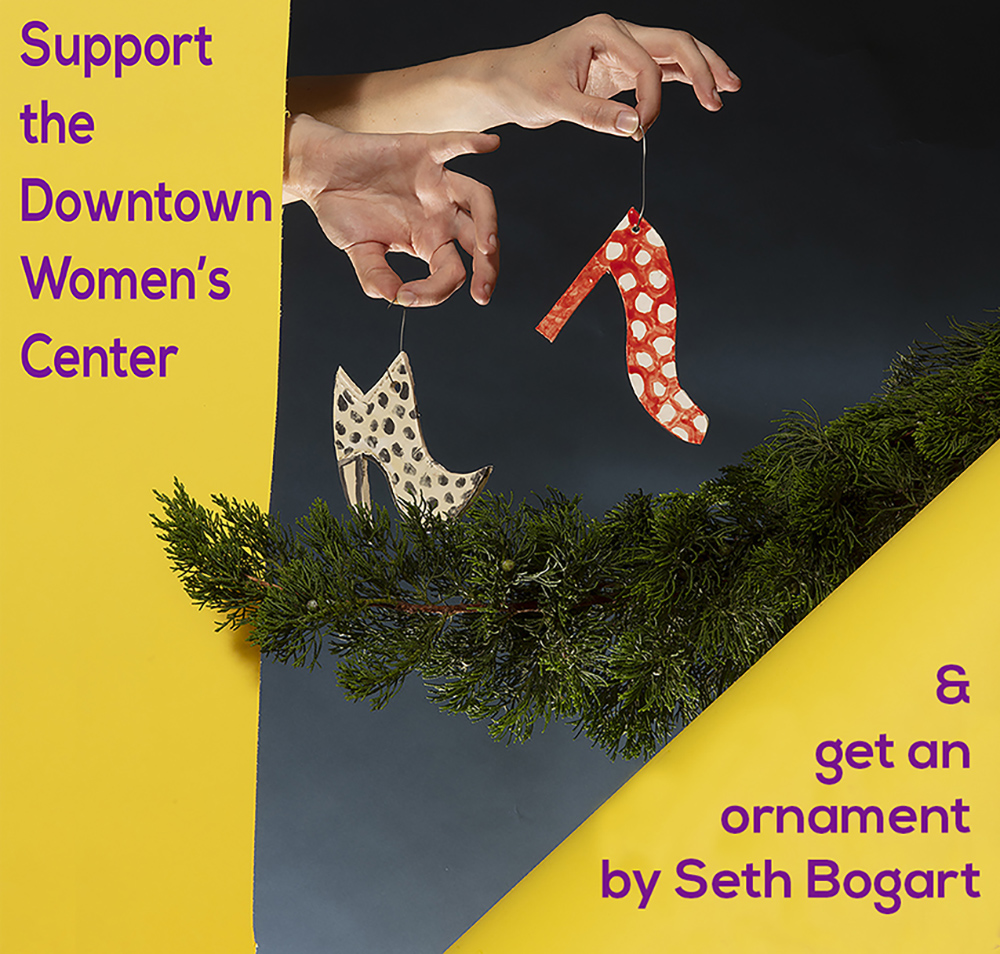OPENING STATEMENTS
House Select Committee Hearing Investigating January 6, 2021 July 27, 2021
AQUILINO GONELL, U.S. Capitol Police Sergeant
Chairman Thompson, members of the select committee, thank you for the opportunity to testify regarding the attack on the US Capitol on January 6th, 2021. It is with honor and heavy heart I come before you to tell you my story from a painful firsthand experience, what happened that terrible day at the Capitol. I’m providing this testimony solely on my personal capacity and not as a representative of the US Capitol. It is imperative that the events of January 6th are fully investigated in the Congress, and the American people know the truth of what actually occurred and that all those responsible are held accountable, particularly to ensure that horrific and shameful event in our history never repeats itself. I applaud you for pursuing this objective.
Even though there’s overwhelming evidence to the contrary, including hours and hours of videos and photographic coverage, there’s a continued shocking attempt to ignore or try to destroy the truth of what truly happened that day and to whitewash the facts into something other than what they unmistakinigly reveal, an attack on our democracy by violent domestic extremists and a stain on our history and our moral standing here at home and abroad.
As a child in the Dominican Republic, I look up to the United States as the land of opportunity and a place to better myself. And from that moment I landed at JFK in 1992, I have tried to pursue that goal. Thankfully, I achieved that goal on many levels. I was the first in my family to graduate college, join the Army and become a police officer. On July 23rd, 1999, the day before my 21st birthday, I raised my hand and swore to protect the Constitution of the United States, because this country gave me an opportunity to become anything that I wanted. At that time, I already started basic training with the Army Reserves. In fact, I raised my hand several times in ceremonies to pledge my commitment to defend and protect the Constitution of the United States, when I joined the Army Reserves, when I was promoted to Sergeant in the Army, when I was promoted during my naturalization ceremony and my reenlistment in the Army, when I joined the United States Capitol Police, and lastly, when I was promoted to Sergeant three years ago.
I’ve always taken my oath seriously. On January 6th, 2021, I fulfilled my oath once more, this time to defend the United States Capitol and members of Congress carrying out their consti tutional duties to certify the results of the November 2020 presidential election. To be honest, I did not recognize my fellow citizens who stormed the Capitol on January 6th or the United States that they claimed to represent. When I was 25 years old and then a Sergeant in the Army, I had deployed to Iraq for Operation Iraqi Freedom. From time to time, I volunteered to travel on IED infested roles to conduct supply missions for US and allied forces in local Iraqi population as well. But on January 6th for the first time, I was more afraid to work at the Capitol than my entire deployment to Iraq.
In Iraq, we expected armed violence because we were in a war zone, but nothing my expe rience in the army or as a law enforcement officer prepared me for what we confronted on January 6th. The verbal assaults and disrespect we endured from the rioters were bad enough. I was falsely accused of betraying my oath, of choosing my paycheck over my loyalty to the US Constitution, even as I defended the very democratic process that protected everyone in the hostile crowd. While I was at the lower west terrace of the Capitol working with my fellow officers to prevent the breach and restore order, the rioters called me traitor, a disgrace and that I, an Army veteran and a police officer, should be executed.
Some of the rioters had the audacity to tell me there was nothing personal, that they would go through me, through us police officers to achieve their goal, as they were breaking metal barriers to use as a weapon against us. Others used more menacing language. “If you shoot us, we all have weapons, we will shoot back, or we’ll get our guns. We outnumber you,” they say, “Join us.” I heard specific threats to the lives of Speaker Nancy Pelosi, and then also Vice President Mike Pence. But the physical violence we experienced was horrific and devastating. My fellow officers and I were punched, kicked, shoved, sprayed with chemical irritants. And he’d been blinded with eye damaging lasers by a violent mob, who apparently saw us law enforcement officer dedicated to ironically protecting them as US citizens as an impediment to their attempted insurrection. The mob brought weapons to try to accomplish their insur rectionist objectives, and used them against us. These weapons included hammers, rebars, knives, baton and police shields taken by force, as well as bear spray and pepper spray.
Some of the rioters wore tactical gear, including bulletproof vests and gas masks. A rioter also forcibly took out batons and shields to use them against us. I was particularly shocked at the scene, the insurrectionists violently attacked us with the very American flag that they claimed to serve to protect. Based on the coordinated attacks that we observed and the verbal com mands we heard, it appears that many of these attackers had law enforcement or military experience. The rioters were vicious and relentless. We found ourselves in a violent battle, desperate to attempt to prevent a breach of the Capitol by the entrance near the inauguration stage. Metropolitan Police Officers were being pulled into the crowd. We have one right here, right next to me.
As we tried to push the rioters back for the breaching the Capitol, in my attempt to assist two MPD officers, I grabbed one officer by the back of the collar and pulled him back to the police line. When I tried to help the second officer, I found on top of some police shields on the ground that were slippery because of pepper spray and bear spray. Rioters immediately began to pull me by my leg, by my shield, by my ear strap on my left shoulder. My survivalist instincts kicked in and I started kicking and punching, as I tried in vain to gain MPD officer attention behind and above me. Well, they could not help me because they also were being attacked.
I finally was able to hit the rioter who was grabbing me with my baton and able to stand. And then I continued to fend off new attackers, as they kept rotating and attacking us again and again. What we were subjected that day was like something from a Medieval battle. We fall hand to hand, inch by inch to prevent an invasion of the Capitol by a violent mob intent on subverting our democratic process. My fellow officers and I were committed to not letting any rioters breach the Capitol. It was a prolonged and desperate struggle. The rioters who attempt ed to breach the Capitol were shouting, “Trump sent us. Take the right side. We want Trump.”
I bitterly heard officers screaming in agony and pain, just an arm’s length from me. I didn’t know at that time, but that was Officer Hodges. He’s here today to testify. I too was being crushed by the rioters. I could feel myself losing oxygen and recall thinking to myself, this is how I’m going to die, defending this entrance. Many of the officers fighting alongside me were calling for shields because their shields had been stripped from them by the rioters. I was one of the few officers left with a shield, so I spent a majority of my time at the front of the line.
I later find out that my wife and relatives who were here in the US and abroad, were frantically calling and texting me from 2:00 PM onward because they were watching the turmoil on tele vision. It was now 4:26 PM. After giving CPR to one of the rioters who breached the Capitol in an effort to save her life, that I finally had a chance to let my own family know that I was alive. After order had finally been restored at the Capitol and many hours, I arrived at home at nearly 4:00 AM on January 7th. I had to push my wife away from me because she wanted to hug me. I told her no because of all the chemicals my uniform had on. (Emotional) I’m sorry.
I couldn’t sleep because the chemical reactivated after I took a shower and my skin was burning. I finally fell asleep two hours later, completely physically and mentally exhausted, yet by eight o’clock AM, I was already on my way back to the Capitol. And I continued to work for fifteen consecutive days until after the inauguration. I made sure to work despite my injuries, because I wanted to continue doing my job and help secure the Capitol complex. More than six months later, I’m still trying to recover from my injuries.
Many of my fellow Capital officers, as well as MPD officers suffered several physical injuries from the violence inflicted on us on January 6th. I sustained injuries on both my hands, my left shoulder, my left calf and my right foot. I already have undergone bone fusion surgery on my right foot, and I was just told that I need surgery on my left shoulder. I’ve been on medical and administrative leave for much of the past six months, and I expect to need further rehabilitation for possibly more than a year.
There are some who express outrage when someone kneels while calling for social justice. Where are those same people expressing the outrage to condemn the violent attack on law enforcement at the Capitol in our American democracy? I’m still waiting for them. As America and the world watched in horror what was at the Capitol, we did not receive timely reinforce ment and support we needed. In contrast, during the Black Lives Matter protests last year,
US Capitol Police had all the support we needed and more. Why the different response?
Were it not for the brave members of the MPD and later on from other law enforcement agen cies, I’m afraid to think what could have happened on January 6th. I want to publicly thank all the law enforcement agencies that responded to assess that day, for their courage and their support. I especially want to thank those Capitol Police Officers who responded on their own from home after working midnight a shift. Despite being outnumbered, we did our job. Every member of the House of Representatives, Senators and staff members made it home. Sadly as a result of that day, we lost officers, some really good officers, but we held the line to protect our democratic process because the alternative would have been a disaster.
We are not asking for metals, recognition. We simply want justice and accountability. For most people, January 6th happened for a few hours, but for those of us who were in the thick of it, it has not ended. That day continues to be a constant trauma for us literally every day, whether because our physical or emotional injuries or both. Why he has not received much attention, sadly many of my colleagues have quietly resigned from the Capitol because of that day. I’m also regularly called by law enforcement officials and prosecutors to help identify from photo graph and videos the rioters.
And to be honest, physical therapy is painful and hard. I could have lost my life that day, not once but many times. But as soon as I recover from my injuries, I will continue forward and proudly serve my country in the US Capitol Police. As an immigrant to the United States, I’m especially proud to have defended the US Constitution and our democracy on January 6th. I hope that everyone in the position of authority in our country has the courage and conviction to do their part by investigating what happened on that terrible day and why. This investigation is essential to our democracy, and I’m deeply grateful to you for undertaking. I’m happy to assist as I can and answer any question you may have to the best of my ability. Thank you.
MICHAEL FANONE, Washington, D.C. Metropolitan Police Department Officer
Thank you, Mr. Chairman and members of this committee for inviting me to provide my eye-witness testimony of the violent assault on our nation’s Capitol on January 6th, 2021. My name, for those of you who don’t know, is Michael Fanone. And while I’ve been a sworn officer with the Metropolitan Police Department in Washington, DC for almost two decades, my law enforcement career actually began here in this building as a United States Capitol Police Officer shortly after 9/11. In part, because of the 2001 attack on our country by terrorists, I felt called to serve. As a Capitol Police Officer, I was proud to protect this institution and dedicated members of Congress and their staff who work hard each day to uphold our American democ racy. I remain proud of the work of the United States Capitol Police and MPD officers who literally commit their lives to protecting the safety of each of you and all of us in this room in our nation’s Capitol.
After leaving the United States Capitol Police, I became an MPD officer serving the residents of Washington, DC. I have spent the majority of my nearly 20 years as a Metropolitan Police Officer working in special mission units whose responsibilities include the investigation and arrest of narcotics traffickers and violent criminals. I’ve worked both as an undercover officer and a lead case officer in many of these investigations. In this line of work, it probably won’t shock you to know that I’ve dealt with some dicey situations. I thought I’d seen it all many times over.
Yet what I witnessed and experienced on January 6th, 2021 was unlike anything I had ever seen, anything I had ever experienced or could have imagined in my country. On that day, I participated in the defense of the United States Capitol from an armed mob, an armed mob of thousands, determined to get inside. Because I was among the vastly outnumbered group of law enforcement officers protecting the Capitol and the people inside it, I was grabbed, beaten, tased, all while being called a traitor to my country. I was at risk of being stripped of and killed with my own firearm, as I heard chants of, “Kill him with his own gun.” I could still hear those words in my head today. Although I regularly deal with risky situations on the job, nowhere in my wildest imagination did I ever expect to be in that situation or sitting here before you talking about it. That experience and its aftermath were something that not even my extensive law enforcement training could prepare me for.
I was just one of hundreds of local police who lined up to protect Congress, even though I had not been assigned to do that. Some had asked why we ran to help when we didn’t have to. I did that because I simply could not ignore what was happening. Like many other officers, I could not ignore the numerous calls, numerous calls for help coming from the Capitol complex. I’m a plainclothes officer assigned to the first district’s crime suppression team, but for the first time in nearly a decade, I put on my uniform. When my partner, Jimmy Albright, and I arrived at the Capitol around 3:00 that afternoon, it was like (coughs) excuse me, it was unlike any scene I had ever witnessed. Jimmy parked our police vehicle near the intersection of South Capitol Street and D Street in Southeast, and we walked to the Capitol, from there passing the Longworth House Office Building.
It was eerily quiet, and the sidewalks, usually filled with pedestrians, were empty. As we made our way to Independence Avenue, I could see dozens of empty police vehicles that filled the street, police barricades, which had been abandoned, and hundreds of angry protestors, many of whom taunted us as we walk towards the Capitol building. Jimmy and I immediately began to search for an area where we could be of most assistance. We made our way through a door on the south side of the Capitol, walking then to the crypt and finally down to the lower west terrace tunnel. It was there that I observed a police commander struggling to breathe as he dealt with the effects of CS gas that lingered in the air. Then I watched him collect himself, straighten his cap and trench coat adorned with its silver eagles, and return to the line. That commander was Ramey Kyle of the Metropolitan Police Department, and those images are etched into my memory, never to be forgotten.
In the midst of that intense and chaotic scene, Commander Kyle remained cool, calm and collected as he gave commands to his officers. “Hold the line,” he shouted over the roar. Of course that day, the line was the seat of our American government. Despite the confusion and stress of the situation, observing Ramey’s leadership, protecting a place I cared so much about, was the most inspirational moment of my life. The bravery he and others showed that day are the best examples of duty, honor and service. Each of us who carries a badge should bring those core values to our work every day.
The fighting in the lower west terrace tunnel was nothing short of brutal. Here, I observed approximately 30 police officers standing shoulder to shoulder, maybe four or five abreast, using the weight of their bodies to hold back the onslaught of violent attackers. Many of these officers were injured, bleeding, and fatigued, but they continued to hold the line. As I don’t have to tell the members in this room, the tunnel is a narrow and long hallway. It is not the sort of space anyone would want to be pulled into hand-to-hand combat with an angry mob. Although the narrowness of the hallway provided what was probably the only chance of hold ing back the crowd from entering your personal offices, the House and Senate Chambers.
In an attempt to assist injured officers, Jimmy and I asked them if they needed a break. There were no volunteers. Selflessly, those officers only identified other colleagues who may be in need of assistance. The fighting dragged on. I eventually joined the tactical line at the tunnel’s entrance. I can remember looking around and being shocked by the sheer number of people fighting us. As my police body worn camera shows, thousands upon thousands of people seem ingly determined to get past us by any means necessary.
At some point during the fighting, I was dragged from the line of officers and into the crowd. I heard someone screaming, ” I got one.” As I was swarmed by a violent mob, they ripped off my badge. They grabbed and stripped me of my radio. They seized ammunition that was secured to my body. They began to beat me with their fists and with what felt like hard metal objects. At one point, I came face-to-face with an attacker who repeatedly lunged for me and attempted to remove my firearm. I heard chanting from some in the crowd, “Get his gun and kill him with his own gun.”
I was aware enough to recognize I was at risk of being stripped of and killed with my own firearm. I was electrocuted again and again and again with a taser. I’m sure I was screaming, but I don’t think I could even hear my own voice. My body camera captured the violence of the crowd directed toward me during those very frightening moments. It’s an important part of the record for this committee’s investigation and for the country’s understanding of how I was assaulted and nearly killed as the mob attacked the Capitol that day, and I hope that everyone will be able to watch it. The portions of the video I’ve seen remained extremely painful for me to watch at times, but it is essential that everyone understands what really happened that tragic day. During those moments, I remember thinking there was a very good chance I would be torn apart or shot to death with my own weapon. I thought of my four daughters who might lose their dad. I remain grateful that no member of Congress had to go through the violent assault that I experienced that day.
During the assault, I thought about using my firearm on my attackers, but I knew that if I did, I would be quickly overwhelmed, and that in their minds would provide them with the justifi cation for killing me. So I instead decided to appeal to any humanity they might have. I said as loud as I could manage, “I’ve got kids.” Thankfully, some of the crowd stepped in and assisted me. Those few individuals protected me from a crowd and inched me toward the Capitol until my fellow officers could rescue me. I was carried back inside. What happened afterwards is much less vivid. I had been beaten unconscious and remained so for more than four minutes. I know that Jimmy helped to evacuate me from the building and drove me to MedStar Wash ington Hospital Center, despite suffering significant injuries himself.
At the hospital, doctors told me that I had suffered a heart attack, and I was later diagnosed with a concussion, a traumatic brain injury and post-traumatic stress disorder. As my physical injuries gradually subsided and the adrenaline that had stayed with me for weeks waned, I’ve been left with the psychological trauma and the emotional anxiety of having survived such a horrific event, and my children continue to deal with the trauma of nearly losing their dad that day. What makes the struggle harder and more painful is to know so many of my fellow citi zens, including so many of the people I put my life at risk to defend, are downplaying or outright denying what happened. I feel like I went to hell and back to protect them and the people in this room, but too many are now telling me that hell doesn’t exist or that hell actually wasn’t that bad. The indifference shown to my colleagues is disgraceful.
My law enforcement career prepared me to cope with some of the aspects of this experience. Being an officer, you know your life is at risk whenever you walk out the door, even if you don’t expect otherwise law abiding citizens to take up arms against you. But nothing, truly nothing, has prepared me to address those elected members of our government who continue to deny the events of that day, and in doing so betray their oath of office. Those very members whose lives, offices, staff members, I was fighting so desperately to defend. I agreed to speak here today and have talked publicly about what happened because I don’t think our response to the insurrection should have anything to do with political parties. I know that what my partner Jimmy and I suited up for on January 6th, it didn’t have anything to do with political parties or about politics or what political party any of you public servants belong to.
I’ve worked in this city for two decades and I’ve never cared about those things, no matter who was in office. All I’ve ever cared about is protecting you and the public, so you can do your job in service to this country and for those whom you represent. I appreciate your time and atten tion. I look forward to the committee’s investigation and I am hopeful with your commitment, we as a country will confront the truth of what happened on January 6th and do what is nec essary to make sure this institution of our democracy never falls into the hands of a violent and angry mob. We must also recognize the officers who responded that day, many unsolicited, and
their countless acts of bravery and selflessness. It has been 202 days since 850 MPD Officers responded to the Capitol and helped stop a violent insurrection from taking over this Capitol complex, which almost certainly saved countless members of Congress and their staff from injury and possibly death. The time to fully recognize these officers is now. Thank you again for the opportunity to provide my testimony here today.
DANIEL HODGES, Washington, D.C. Metropolitan Police Department Officer
Good morning to the committee, members of the press and to the country. To the members of the committee, I’d like to thank you for your invitation today to provide my account of my knowledge and experiences from January 6th, 2021. As the Chairman mentioned, I’m a mem ber of Civil Disturbance Unit 42, and I was working in that capacity on the day in question. We started that day at 7:30 AM, and our assignment at the time was to maintain high visibility along Constitution Avenue, namely the blocks leading up to President’s Park, where then President Donald Trump was holding his gathering.
My particular station was in front of 1111 Constitution Avenue, where I stood on foot as the crowd poured down the street and into the park. There were a significant number of men dressed in tactical gear attending the gathering, wearing ballistic vests, helmets, goggles, military face masks, backpacks, and without identifiable visible law enforcement or military patches, they appeared to be prepared for much more than listening to politicians speak in a park. Two of my colleagues were approached by a group of three to four such men. They were white men in good shape with load bearing vests equipped with MOLLE pouches. They were wearing BDUs, or battle dress uniform pants, tactical boots, black sunglasses, and short haircuts. They had radios and one was equipped with an earpiece. After a bit of small talk, one of them asked my colleagues something to the effect of, is this all the manpower you have? Do you really think you’re going to be able to stop all these people? Dumbfounded, my colleagues simply expressed they didn’t understand what the speaker meant, and the group continued on. As the day went on and speakers in the park said their peace, I monitored the crowd and the radio. Over the radio, I heard our gun recovery unit working constantly, monitoring those in the crowds suspected of carrying firearms and making arrests and seizures when possible. Multiple gun arrests were made from January 5th through the 7th against those attending and likely had attended or planned to attend Donald Trump’s gathering. Unfortunately, due to the course of events that day, we will never know exactly how many were carrying firearms and other lethal weapons. I don’t know what time it was, but eventually the flow of the foot traf fic reversed, with people leaving President’s Park and traveling eastbound down Constitution Avenue towards the United States Capitol. At approximately 12:30 PM, I noticed a commotion about half a block to my east. I saw the crowd starting to coalesce around two figures. I ran to where they were and found a confrontation at the intersection of 10th and Constitution Avenue Northwest. One counter protestor, a black man, was backpedaling away from a white man in a Trump labeled face mask, who was closely following him with an outstretched arm. Myself and my colleague first arrived and physically separated the two, but a crowd of Donald Trump’s people had gathered. They attempted to bait the counter protestor into attacking, shouting insults such as, “Your mother’s a whore,” and accusing him of hiding behind the cops.
Eventually, enough MPD members had gathered to move along the crowd, who continued eastbound toward the Capitol Building, and the counter protester departed northbound on 10th Street. Returning to my post, I continued to monitor the radio. I could hear Commander Glover leading the defense efforts at the Capitol as the protestors began their transition from peaceful assembly into terrorism. I became agitated and wished we could move into support, as I could hear the increasing desperation in the commander’s voice, yet we still had to wait for our orders to change. And eventually they did. At approximately 1:30 PM, the commander authorized rapid response platoons to deploy their hard gear and respond to the Capitol, including CDU 42.
The last thing I remember hearing over the air before departing for the Capitol grounds was confirmation that our explosive ordinance disposal team had discovered a device. Given what unit was being associated with the device, I immediately realized MPD had discovered a bomb of some type near the Capitol. This thought was never far from my mind for the rest of the day. We ran back to our vans and got on our hard gear as quickly as we could. Navigating alterna tive routes to avoid the foot traffic, we drove as close as we could to the Capitol—disembarking at the northwest side of the Capitol grounds. We gave our gear a final check, and marched towards the West Terrace. The crowd was thinner the further out from the Capitol you were. So as we marched, the resistance we initially met was verbal. A man sarcastically yelled, “Here come the boys in blue, so brave.” Another called on us to, “Remember your oath.” There was plenty of booing. A woman called us stormtroopers. Another women who was part of the mob of terrorists laying siege to the Capitol of United States shouted, “Traitors.” More found appeal in this label, and shouted, “Traitors,” at us as we passed. One man attempted to turn it into a duosyllabic chant. Now we continued to march. We had been marching in two columns, but as we got closer to the West Terrace, the crowd became so dense that in order to progress, we marched single file with our hands on the shoulders of the man in front of us in order to avoid separation.
However, as we came close to the terrace, our line was divided and we came under attack. A man attempted to rip the baton from my hands, and we wrestled for control. I retained my weapon after I pushed him back. He yelled at me, “You’re on the wrong team.” Cut off from our leadership, which is at the front of our formation, we huddled up and assessed the threats surrounding us. One man tried and failed to build a rapport with me, shouting, “Are you my brother?” Another takes a different tack, shouting, “You will die on your knees.” I was at the front of our group, and determined we had to push our way through the crowd in order to join the defense proper. So I began shouting, “Make way,” as I forged ahead, hoping that I’m clearing a path for others behind me to follow. However, as I looked back, I saw the rest of the group came under attack, and were unable to follow. The crowd attempted to physi cally bar the rest of the platoon from following. I backtrack and started pulling the terrorists off my team from their backpacks and their collars. Around this time, one of the terrorists who had scaled the scaffolding that adorned the Capitol at the time threw something heavy down at me and struck me in the head, disorienting me. I suspect this resulted in the likely concussion I dealt with in the weeks after. Another man attempted to disarm me of my baton, and again, we wrestled for control.
He kicked me in my chest as we went to the ground. I was able to retain my baton again, but I ended up on my hands and knees and blind. The medical mask I was wearing at the time to protect myself from the coronavirus was pulled up over my eyes, so I couldn’t see. I braced myself against the impact of their blows and feared the worst. Thankfully, my platoon had repelled their own attackers, and got me back on my feet. The crowd started chanting, “USA,” at us, and we struck out again for the West Terrace.
I led the charge through the midst of crowd control munitions, explosions, and smoke engulfing the area. Terrorists were breaking apart the middle fencing and bike racks into individual pieces, presumably to use as weapons. Thankfully, we made it to the secondary defense line on the West Terrace that MPD and Capitol Police were managing to hold. The rest of my platoon got behind the line, and we could take stock of the situation. I realized that back during the previous assaults, someone had stolen my radio. From that point on, I was in the dark as to our current status, when reinforcements would arrive. Terrorists were scaling the scaffolding on both our sides of the tower that was in front of us, and attempting to breach the waist-high metal fencing that was the only barrier we had aside from ourselves.
The sea of people was punctuated throughout by flags, mostly variations of American flags and Trump flags. There was Gadson flags. It was clear the terrorists perceived themselves to be Christians. I saw the Christian flag directly to my front. Another read, “Jesus is my savior. Trump is my president.” Another, “Jesus is king.” One flag read, “Don’t give up the ship.” Another had crossed rifles beneath a skull, emblazoned with the pattern of the American flag. To my perpetual confusion, I saw the thin blue line flag, the symbol of support for law enforcement, more than once being carried by the terrorists as they ignored our commands and continued to assault us. The acrid sting of CS gas or tear gas and OC spray, which is mace, hung in the air as the terrorists threw our own CS gas canisters back at us, and sprayed us with their own OC either they bought themselves or stole from us.
Later, I learned at least one of them was spraying us in the face with wasp spray. The terrorists alternated between attempting to break our defenses, and shouting at or attempting to convert us. Men alleging to be veterans told us how they had fought for this country and were fighting for it again. One man tried to start a chant of, “Four more years.” Another shouted, “Do not attack us. We’re not Black Lives Matter,” as if political affiliation is how we determined when to use force. A man in a QAnon hoodie exclaims, “This is the time to choose which side of history to be on.” A man whose shirt read, “God, guns, and Trump,” stood behind him silently holding a Trump flag.
A new man came to the front and fixated on me, continually berating me, telling me to take off my gear and give it to him, “to show solidarity with we the people, or we’re going to run over you.” His voice cracked with the strain and the volume of his threats. He continued, “Do you think your little pea shooter guns are going to stop this crowd? No, we’re going in that building.” Eventually, there is a surge in the crowd. The fence buckled and broke apart, and we were unable to hold the line. A chaotic melee ensued. Terrorists pushed through the line and engaged us in hand-to-hand combat. Several attempted to knock me over and steal my baton. One latched onto my face, and got his thumb in my right eye, attempting to gouge it out. I cried out in pain and managed to shake him off, managed to shake him off before any perma nent damage was done.
I couldn’t fully engage anyone, for the moment I do is when another 20 terrorists move in to attack while my hands are full. It was all we could do to keep ourselves on our feet and con tinue to fall back. I was sprayed with a fire extinguisher, and a red smoke grenade burns at our feet. In the fight, a terrorist is knocked to the ground and his jacket rides up, exposing a large hunting knife on his belt. I, along with several other officers, piled on him while another removed the knife from his person. He regained himself unharmed, and shouts indignantly, “What are you doing? What are you guys doing?” At this point, the terrorists had claimed most of the western terrace, cornering myself and other officers on the southern edge. We found a side stair off of the terrace up to an upper landing, followed by more stairs up and inside. Inside the Capitol building, officers walked through the halls briefly until they found a place to sit, decontaminate their faces of OC and CS, and take a quick breather. I followed suit. Someone had managed to find a package of water bottles and was passing them out. I washed off my face as best I could, rinsed out my mouth, and drank the rest. I took the opportunity of relative safety to don my gas mask. Not long afterward, I heard someone calling for officers to move to assist. I steeled myself for another round and ascended a stairway into a long hallway filled with smoke and screams.
The Capitol building is labyrinthine, but judging from the sound of intense combat, I could tell this hallway led outside to where the terrorists had forced our retreat. Officers were stacked deep, but every so often one would fall back from the front line, nursing an injury or struggling to breathe, and those who remained would take a step forward. It was a battle of inches, with one side pushing the other a few, and then the other side regaining their ground. At the time, I, and I suspect many others in the hallway, did not know that the terrorists had gained entry into the building by breaking in doors and windows elsewhere, so we believed ours to be the last line of defense before the terrorists had true access to the building, and to potentially our elected representatives.
Eventually, it was my turn in the meat grinder that was the front line. The terrorists had a wall of shields that they had stolen from officers as well as stolen batons, what other armaments they brought. Even during this intense contest of wills, they tried to convert us to their cult. One man shouted, “We all just want to make our voices heard, and I think you feel the same. I really think you feel the same,” all while another man attempts to batter us with a stolen shield. Another man, like many others, didn’t seem to appreciate that this wasn’t a game. He fought his way across the lawn, up the steps, through the western terrace, all the OC and CS gas, and at the front line of this final threshold was asking us to hold on because he has asthma. The two sides were at a stalemate at a metal doorframe that sat in the middle of the hallway. At the front line, I inserted myself so the frame was at my back in an effort to give myself something to brace against, provide additional strength when pushing forward.
Unfortunately, soon after I secured this position, the momentum shifted and we lost the ground that got me there. On my left was a man with a clear riot shield stolen during the assault. He slammed it against me, and with all the weight of the bodies pushing behind him, trapped me. My arms were pinned and effectively useless, trapped against either the shield on my left or the doorframe on my right. With my posture granting me no functional strength or freedom of movement, I was effectively defenseless, and gradually sustaining injury from the increasing pressure of the mob. Directly in front of me, a man seized the opportunity of my vulnerability, grabbed the front of my gas mask, and used it to beat my head against the door. He switched to pulling it off my head, the strap stretching against my skull and straining my neck. He never uttered any words I recognized, but opted instead for guttural screams.
I remember him foaming at the mouth. He also put his cell phone in his mouth so that had both hands free to assault me. Eventually, he succeeded in stripping away my gas mask, and a new rush of exposure to CS and OC spray hit me. The mob of terrorists were coordinating their efforts now, shouting, “Heave, ho,” as they synchronized pushing their weight forward, crush ing me further against the metal doorframe. The man in front of me grabbed my baton that I still held in my hands, and in my current state, I was unable to retain my weapon. He bashed me in the head and face with it, rupturing my lip, and adding additional injury to my skull.
At this point, I knew I couldn’t sustain much more damage and remain upright. At best, I would collapse and be a liability to my colleagues. At worst, be dragged out into the crowd and lynched. Unable to move or otherwise signal the officers behind me that I needed to fall back, I did the only thing that I could do, and screamed for help. Thankfully, my voice was heard over the cacophony of yells and the blaring alarm. The officer closest to me was able to extricate me from my position, and another helped me fall back to the building again. I had found some more water and decontaminated my face as best I could. I don’t know how long I waited in the halls for, but soon after, I got back on my feet and went to the front where the fight was again. Until reinforcements arrived, every able body made a difference. Without my gas mask, I was afraid I’d be a liability in the hallway, so I took the exit outside of the upper landing above the West Terrace.
I found a police line being held, and the terrorists encircling us much like on the West Terrace lower. It was getting later in the day, however, and it appeared we weren’t the only ones getting tired. It seemed most of the mob was content to yell rather than try and break our line again. After some time of guarding the upper landing, I saw reinforcements arrive from the south. I’m not sure which law enforcement agency it was, but I turned to them and I started clapping, as it was a sign that badly-needed help was starting to finally arrive. Soon after that, I started feeling the effects of the day taking their toll, and went back inside to rest. Gradually, all the members of CDU 42 gathered in the room known as the Capitol Crypt. We checked on each other and convalesced, glad to see each other in one piece. Despite our exhaustion, we would have ran out into the fight again, should the need have arisen. Thankfully, as the day wore on, more and more resources had arrived at the Capitol to drive off the terrorists. We stayed in the Crypt until quite late. Indeed, even after we were allowed to leave the grounds, we didn’t get to go home. Those who needed immediate medical attention took a van to the local hospital, while the rest of us parked near the city center until the city was deemed secure enough for us to check off. I believe we finally got that message around 1:00 AM the following morning. We drove back to the Fourth District and from there went home. Thank you for letting me testify.
HARRY DUNN, U.S. Capitol Police Sergeant
Chairman Thompson, members of the select committee, thank you for the opportunity today to give my account regarding the events of January 6th, 2021 from my firsthand experience as a Capitol Police officer directly involved in those events, and still hurting from what happened that day. I’m provided this testimony solely in my personal capacity, and not as a representa tive of the United States Capitol Police. Before I begin, I’d like to take a moment of my time to ask for a moment of silence for my fallen colleague, Officer Brian Sicknick, who died from injuries he sustained in the line of duty defending the Capitol of our beloved democracy. Thank you. I reported for duty at the Capitol as usual early on the morning of January 6th. We under stood that the vote that certified President Biden’s election will be taking place that day, and protests might occur outside the Capitol, but we expected any demonstrations to be peaceful expressions of First Amendment freedoms, just like the scores of demonstrations we had ob served for many years. After roll call, I took my overwatch post on the east front of the Capitol, standing on the steps that led up to the Senate Chamber. As the morning progressed, I did not see or hear anything that gave me cause for alarm, but around 10:56 AM, I received a text message from a friend forwarding a screenshot of what appeared to be the potential plan of action, very different from a peaceful demonstration. The screenshot bore the caption, “January 6th, rally point Lincoln Park,” and said the objective was the Capitol.
It said amongst other things that Trump has given us marching orders, and to keep your guns hidden. It urged people to bring your trauma kits and gas mask, to link up early in the day in 6 to 12-man teams. It indicated there would be time to arm up. Seeing that message caused me concern. To be sure looking back now, it seemed to foreshadow what happened later. At the time though, we had not received any threat warnings from our chain of command. I had no independent reason to believe that violence was headed our way.
As the morning progressed, and the crowd of protestors began to swell on the east side of the Capitol, many displaying Trump flags, the crowd was chanting slogans like, “Stop the steal,” and, “We want Trump,” but demonstration was still being conducted in a peaceful manner. Early that afternoon, Capitol Police dispatch advised all units over the radio that we had an active 10-100 at the Republican National Committee nearby. 10-100 is police code for suspi cious package, such as a potential bomb. That radio dispatch got my attention, and I started to get more nervous and worried, especially because the crowds on the east front of the Capitol were continuing to grow. Around the same time I started receiving reports on the radio about large crowd movements around the Capitol, coming from the direction of the Ellipse to both the west and east fronts of the Capitol. Then I heard urgent radio calls for additional officers to respond to the west side, and an exclamation, a desperate voice that demonstrators on the west side had breached the fence.
Now it was obvious that there was a direct threat to the Capitol, I quickly put on a steel chest plate which weighs approximately 20 pounds, and carrying my M4 rifle, sprinted around the north side of the Capitol to the West Terrace and the railing of the inaugural stage, where I had a broad view of what was going on. I was stunned by what I saw. In what seemed like a sea of people, Capitol Police officers and Metropolitan Police officers, MPD, were engaged in desper ate hand-to-hand fighting with rioters across the west lawn. Until then, I had never seen any one physically assault Capitol Police or MPD, let alone witness mass assaults being perpetrated on law enforcement officers. I witnessed the rioters using all kinds of weapons against officers, including flagpoles, metal bike racks that they had torn apart, and various kinds of projectiles. Officers were being bloodied in the fighting. Many were screaming, and many were blinded and coughing from chemical irritants being sprayed in their faces.
I gave decontamination aid to as many officers as I could, flushing their eyes with water to dilute the chemical irritants. Soon thereafter, I heard, “Attention all units, the Capitol has been breached,” and that rioters were in various places inside the building. At that point, I rushed into the Capitol with another officer, going first to the basement on the Senate side, where I’d heard an MPD officer needed a defibrillator. After returning outside to the West Terrace to assist the officers, I went back into the Capitol and up the stairs towards the Crypt. There, I saw rioters who had invaded the Capitol carrying a Confederate flag, a red MAGA flag, and a Don’t Tread On Me flag. I decided to stand my ground there to prevent any rioters from heading down the stairs to the lower West Terrace entrance, because that’s where officers were getting decontamination aid and were particularly vulnerable. At the top of the stairs, I confronted a group of insurrectionists warning them, “Do not go down those steps.” One of them shouted, “Keep moving, patriots.” Another displayed what looked like a law enforcement badge, and told me, “We’re doing this for you.” One of the invaders approached me like he was going to try to get past me and head down the stairs. I hit him, knocking him down. After getting relieved by other officers in the Crypt, I took off running upstairs towards the Speaker’s Lobby, and helped the plain clothes officer who was getting hassled by insurrectionists. Some of them were dressed like members of a militia group, wearing tactical vests, cargo pants, and body armor. I was physically exhausted, and it was hard to breathe and to see because of all the chemical spray in the air.
More and more insurrectionists were pouring into the area by the Speaker’s Lobby near the Rotunda, and some wearing MAGA hats and shirts that said, “Trump 2020.” I told them to just leave the Capitol, and in response they yelled, “No, man, this is our house. President Trump invited us here. We’re here to stop the steal. Joe Biden is not the president. Nobody voted for Joe Biden.” I’m a law enforcement officer, and I do my best to keep politics out of my job, but in this circumstance I responded, “Well, I voted for Joe Biden. Does my vote not count? Am I nobody?” That prompted a torrent of racial epithets. One woman in a pink MAGA shirt yelled, “You hear that guys? This n***** voted for Joe Biden.” Then the crowd, perhaps around 20 people, joined in screaming, “Boo, fucking n*****.” No one had ever, ever called me a n***** while wearing the uniform of a Capitol Police officer.
In the days following the attempted insurrection, other Black officers shared with me their own stories of racial abuse on January 6th. One officer told me he had never, in his entire 40 years of life been called a nigger to his face, and that streak ended on January 6th, yet another Black officer later told me he had been confronted by insurrectionists in the Capitol who told him, “Put your gun down and we’ll show you what kind of nigger you really are.” To be candid, the rest of the afternoon is a blur, but I know I went throughout the Capitol to assist officers who needed aid, and helped expel more insurrectionists. In the Crypt, I encountered Sergeant Gonell, who was giving assistance to an unconscious woman who had been in the crowd of rioters on the west side of the Capitol. I helped to carry her to the area of the House majority leader’s office, where she was administered CPR.
As the afternoon wore on, I was completely drained, both physically and emotionally, and in shock and in total disbelief over what had happened. Once the building was cleared, I went to the Rotunda to recover with other officers, and share our experiences from what happened that afternoon. Representative Rodney Davis was there offering support to officers, and when he and I saw each other, he came over and he gave me a big hug. I sat down on the bench in the Rotunda with a friend of mine who was also a Black Capitol Police officer, and told him about the racial slurs I endured. I became very emotional, and began yelling, “How the blank could something like this happen? Is this America?” I began sobbing. Officers came over to console me.
Later on January 6th, after order and security had been restored in the Capitol through the hard work and sacrifices of law enforcement, members took the floor of the House to speak out about what had happened that day. Among them was House Minority Leader Kevin McCarthy, who along with my fellow officers I had protected that day, and will protect today and tomorrow. I had protected that day and will protect today and tomorrow. And the minori ty leader, to his great credit, said the following to the House, “The violence, destruction, and chaos we saw earlier was unacceptable, undemocratic, and un-American. It was the saddest day I’ve ever had serving in this institution,” end quote. Members of the select committee, the minority leader was absolutely right, how he described it took place in the Capitol. And for those of us in the Capitol Police who serve and revere this institution and who love the Capitol building, it was the saddest day for us as well. More than six months later, January 6th still isn’t over for me.
I’ve had to avail myself of multiple counseling sessions from the Capitol Police Employee Assistance Program, and I’m now receiving private counseling therapy for the persistent emo tional trauma of that day. I’ve also participated in many peer support programs with fellow law enforcement officers from around the United States. I know so many other officers continue to hurt, both physically and emotionally. I want to take this moment to speak to my fellow officers about the emotions they are continuing to experience from the events of January 6th. There’s absolutely nothing wrong with seeking professional counseling. What we went through that day was traumatic, and if you are hurting, please take advantage of the counseling services that are available to us. I also respectfully ask that this select committee review the available resources, the services available to us, and consider whether they are sufficient enough to meet our needs, especially with respect to the amount of leave that we are allowed.
In closing, we can never again allow democracy to be put in peril as it was on January 6th. I thank the members of the select committee for your commitment to determine what led to di saster at the Capitol on January 6th, what actually took place that day, and what steps should be taken to prevent such an attack on our democracy from ever happening again. I also want to thank and acknowledge my brothers and sisters in blue who fought alongside me on January 6th to protect our democracy. Each of you is a hero, and it is my honor to serve with you each and every day.
I’d like to thank the American people for all of the support that they have provided these past several months to me and my fellow officers. Lastly, to the rioters, the insurrectionists, and the terrorist of that day, democracy went on that night and still continues to exist today. Democracy is bigger than any one person and any one party. You all tried to disrupt democracy that day, and you all failed. Thank you again for the opportunity to testify, and I will be happy to answer any questions that you may have.
